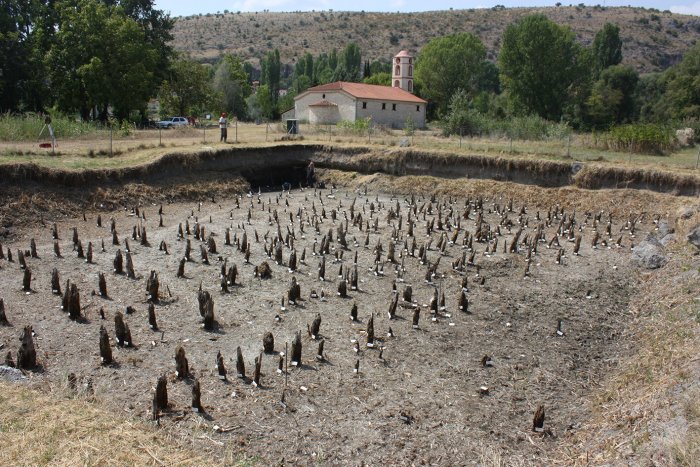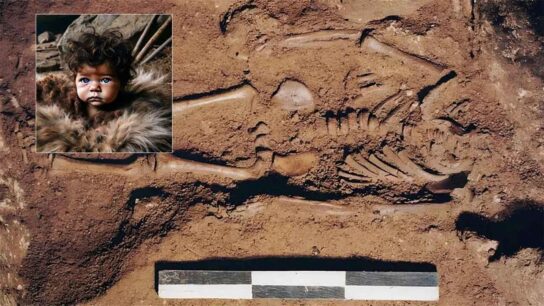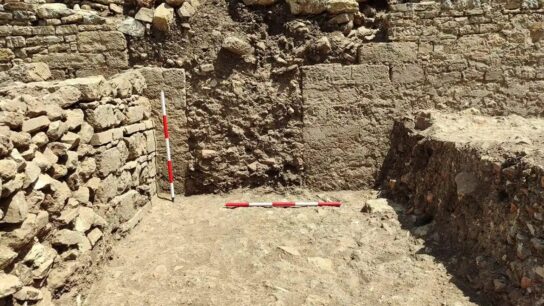Researchers succeed for first time in accurately dating a 7,000-year-old prehistoric settlement using cosmic rays
An enormous solar storm that occurred 7,000 years ago has helped archaeologists to date an ancient settlement in northern Greece.
A spike in radiocarbon was spotted in the wood from which these ancient buildings were made, dating the settlement to between 5328 and 5140 B.C., according to a new paper in the journal Nature Communications.

This spike was caused by a huge solar storm known as a Miyake Event, which occurred in 5259 B.C..
“This helps us date archaeological sites with ultra-high precision, which is one of the aims of archaeological research—to find out how old finds are. This allows comparison and to see evolutions,” co-author Albert Hafner, a professor of prehistoric archaeology at the University of Bern, Switzerland, told Archaeologyworldnews.
In the paper, the researchers explain how they analyzed 787 pieces of timber from the archaeological site of Dispilio on Lake Orestiada in northern Greece, using both dendrochronology and radiocarbon dating.
Dendrochronology, or tree-ring dating, is a method of dating based on the analysis of patterns of tree rings that grow with every year that passes.
Radiocarbon dating, also known as carbon-14 dating, is a method used to determine the age of an object containing organic material by measuring the amount of carbon-14 it contains.
Carbon-14 is constantly being produced in our upper atmosphere due to the presence of cosmic rays or solar storms.
The carbon-14 in the dead organic material decays over time at a known rate, meaning that when scientists compare the amount of carbon-14 left in the sample to what would have been there when the organism was alive, they can calculate how old the sample is.
“In Central Europe there is a tree-ring chronology that goes back almost 12,500 years into the past—to the year 10,375 BC.
However, this chronology only applies to certain regions. There is no consistent chronology for the Mediterranean region,” study co-author Andrej Maczkowski, a researcher at the University of Bern, said in a statement.
Dendrochronology has its drawbacks, however, as it requires an established timeline to have already been created to which researchers can compare the tree rings of an artifact or settlement.
“Until recently, it was therefore believed that dendrochronological dating to the year was only possible if a continuous regional tree-ring chronology was available, which is the case for prehistoric periods in just three regions worldwide: this is the southwestern United States, the northern Alpine foothills and England and Ireland,” Hafner said in the statement.
To overcome these hurdles, researchers can keep an eye out for Miyake Events instead.
Japanese cosmic-ray physicist Fusa Miyake discovered in 2012 that powerful solar storms—dubbed Miyake Events—can cause a spike in the carbon-14 in our atmosphere, which can then be seen in the tree rings that grew that year. These tree rings are therefore crucial for dating ancient wood samples.
“Miyake recognized the first anchor points of this kind and thus brought about a paradigm shift in prehistoric archaeology,” said Hafner.
Around a dozen Miyake Events have been spotted throughout history, notably in 5259 and 7176 B.C., as well as an extremely powerful one around 14,300 years ago.
The researchers were able to figure out that the ancient settlement had existed over a period of about 188 years between 5328 and 5140 B.C., thanks to the presence of the carbon-14 spike in 5259 B.C. in the tree rings.
“The Balkans is therefore the first region in the world to benefit from this paradigm shift and to be able to successfully determine absolute dating independently of a consistent calendar,” Hafner said.
Maczkowski agreed: “We expect that other chronologies for the region from this period can now be linked to the ‘Dispilio Chronology’ in rapid succession. This paves the way to developing a regional dendrochronology for the southern Balkans.”



